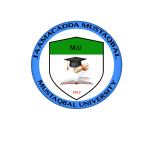Bachelor of general Medicine and Surgery
The Bachelor of Medicine and Bachelor of Surgery (MBBS) program is a six-year undergraduate degree. It is an interdisciplinary program, integrating biomedical sciences and clinical skills training. The course is thematic and places emphasis on clinical communication skills, with clinical contact visits to medical practices, community care facilities and hospitals commencing in the first year. Students are also required to spend time in community health sites as part of a health care team.
The learning environment is a conducive environment designed for teaching and learning. It is structured to allow optimal flexibility and choice in time, place and style of learning. While the primary integrating modality of the curriculum is problem-based learning, this is undertaken in a range of different modalities including tutor-facilitated sessions, student presentations and small group learning supported by appropriate clinical interaction.
Program Outcomes
1. Successful graduates of this program are expected to:
2. Demonstrate understanding and application of Islamic ethics and values in all aspects of the medical curriculum.
3. Be knowledgeable, skilled, reflective, critical thinker and compassionate;
4. Be innovative in their approach to, and solution of problems;
5. Be skilled at accessing, appraising and applying the best available evidence to their everyday practice; 5. Demonstrate awareness of the social, ethical, economic and environmental context of health and illness and psychological wellbeing, and delivery of care;
6. Be committed to the health of populations as well as individuals;
7. Be concerned with issues of equity, quality and humanity in health care and who advocate for the disadvantaged and dispossessed;
8. Maintain high standards throughout their professional life by a commitment to life-long learning and teaching;
9. Have the skill to address the key questions relevant to the community and to medicine;
10. Be capable of leadership and are comfortable working as a team member;
11. Uphold the community’s trust and expectations of the role of a doctor;
12. Be advocate for health by practicing preventive medicine and health promotion;
13. Recognize the essential role of research in underpinning medical practice;
14. Provide exemplary primary, secondary and tertiary health care and other related community health services.
Program Duration
This is a six-year program. Every academic year consists of two 24-week semesters of 20 weeks for theory and 4 weeks for practical field attachment, except in the first year where students are attached in the demonstration room for basic procedure mastering.
Admission Requirements
Admission criteria in health training programmes have far-reaching implications in education and training processes and the outcomes of such programmes, thus, the graduates and the quality of health services. Consideration of the admission requirements to the Community Health Nurse programme is in light of the prevailing health situation in Somalia.
Candidates for direct or in-service admission into the course programme must possess the stipulated qualification requirements in Somalia, and the equivalent, especially in neighboring countries.
Any student seeking admission from any MU Department of Nursing to pursue the course should fulfill the following requirements:
1. Be not younger than 18 years of age.
2. Submit secondary leaving certificate with minimum average marks of not less than 60% from recognized school and umbrella and passed the Somali Government centralized exam.
3. Application for admission.
4. Pay the registration and enrollment fees as per required.
5. Fill the application form fittingly.
6. Successfully pass the university entrance examination,
7. Bring the following documents with you:-
a. Original secondary certificate (both from the school & the government)
b. Original national identity card/passport/birth certificate
c. Two (2) certified clear sets of photocopies of (a) and (b)
d. Seven (7) certified passport sized photos
Assessment Approaches
Formative
Formative assessment is used as a bridge between learning and teaching. It allows instructors to gather real data about students as they work, then adjust their instruction to better serve students at their current learning level. In nursing education, formative assessment has been proven to be highly effective not only for student learning, but for faculty teaching and, as a result, increases the overall quality of learning.
Formative assessment used in the department include; Continuous Assessment Tests, Assignments, Quizzes, Random Assessment Tests, End of Semester Examinations and Supplementary Examinations.
Summative
The goal of summative assessment is to evaluate student learning at the end of an instructional unit/module. Summative assessment include; Final Qualifying Examinations (theory), Final Qualifying Examinations (theory and practical), End of Semester Examinations, and Promotional Examinations.
Teaching Approach/Strategies
Teaching approach is a set of principles, beliefs, or ideas about the nature of learning which is translated into the classroom while teaching strategy is a long term plan of action designed to achieve a particular goal. These include the following; Informal Lectures/Discussions, Modified Lectures, Group Discussion, Small Group Discussions, Demonstrations and return demonstration, Role plays, Team Teaching, Project Assignments, Case Presentations, Nursing Care Studies, Self-Directed Learning, Programmed Learning, Simulations, Educational Trips, Film Shows and Problem Based Learning.
Teaching Aids/Instructional Materials
Include the following; Chalk Board, White Board, Flip Chart , Flip Charts Stand, Posters, Poster Stand, Videos, Videos tapes, Video camera, Slides, Slide Projectors, Models of various body parts/organs, Study guides, Lesson plans, Course outlines, Computers, Laptops, LCD projectors, Over Head Projectors, Human Skeleton, Dummies, Human Skeletons, Manikins, Simulators, Real Human Beings (Simulated Patients), Microscopes, and Real Human Body Parts.
